Billy Duffy is the guitarist for The Cult, a renowned British hard rock band with psychedelic and punk rock influences formed in 1983. The Cult’s notable albums include Love (1985), Electric (1987), and Sonic Temple (1989), and in 2012 they released a new album called Choice of Weapon. Their songs include “She Sells Sanctuary”, “Love Removal Machine”, “Fire Woman”, and “Edie (Ciao Baby)”, all co-written by Duffy and singer Ian Astbury. Before The Cult, Duffy played in The Nosebleeds (with a pre-Smiths Morrissey, who Duffy reportedly introduced to Johnny Marr), Slaughter & The Dogs for a short time, and Theatre of Hate.
The following interview was conducted by phone on 8/7/12, and served as the basis for a preview article for The Cult’s concert at the Majestic Ventura Theater on 8/18/12. (Michael Lavine photo)
Jeff Moehlis: What can we look forward to at the upcoming concert in Ventura?
Billy Duffy: Well, the usual good hard-rocking time with The Cult. I don’t recall doing a bad gig up there. It’s always a good atmosphere. I mean, generally for shows the audience really are a huge part of the evening as well. Generally the crowds up there have a good reputation, not just with The Cult, but with a lot of people. It’s a very enthusiastic, non-Hollywood crowd. So we’re always keen.
It’s the first show of a leg of the tour that takes us up the coast and across Canada, and straight into the U.K. It’s a nice little opener for us, fairly close to where most of us live. We always look forward to playing up there. Hopefully they can look forward to a band that’s not too rusty, either. We’ve been playing a while now. We were just on a little break, so we’re fine.
JM: By Cult standards at least, the band’s line-up is pretty stable. It must be working well with Chris [Wyse] and John [Tempesta] on bass and drums.
BD: Yeah, we seem to have settled into a good healthy groove with those guys. They seem to like the way it is with The Cult, they’ve been fitted in very well. So now, yeah, it’s a fairly long-serving line-up. I think the guys really enjoy it. They wouldn’t stick around if they didn’t.
I think Johnny once tried to audition with the band in the ’90’s, but I don’t think me and Ian actually showed up to the audition. Which is a story he constantly reminds us of.
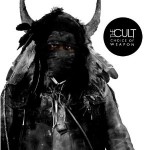
JM: Your new album [Choice of Weapon] had two producers, Chris Goss and Bob Rock. What’s the story behind that? [Chris Goss is from Queens of the Stone Age, Masters of Reality, and Kyuss, and also works as a producer; Bob Rock produced The Cult’s Sonic Temple (1989), The Cult (1994), Beyond Good and Evil (2001), and co-produced Choice of Weapon (2012)]
BD: We did some recordings with Chris Goss, the Capsules enhanced EPs, that we wanted to try and break the mold of the traditional album/tour cycle. Initially we didn’t even think of doing an album, we just went in and did these little EPs, and we used Chris Goss and they were great. But they only contained a couple of new songs. And then we put some live stuff and some video/visual element in there. They were great! There was a bit of a demand, we got a record deal. Somebody said, “Hey, make a record.” So we said, “Alright, great.” And we went in the studio with Chris.
The difference there was we had to do a lot more tracks. We had to come up with a lot more material. I think basically what happened is we got a little bit bogged down with Chris in the time that we had available. We just seemed to get at a bit of an impasse. We really weren’t making the progress. I’m sure we could’ve finished it with Chris, but me and Ian made the decision to make a change of producer, or coach as it were, if you forgive the sporting analogy. And Bob Rock came in and kind of finished it off, you know, which he’s really good at, in a timely fashion. Because it was kind of dragging on a bit, and Bob came in with some real fresh energy and a fresh set of ears. It was just like “bang, bang, bang”, and we finished the record up pretty quickly with Bob. Very much a true collaboration, and also very indicative of two very different, very talented producers, with very different approaches as guys.
I think it was a positive result. We couldn’t have gotten the same result without two different producers, that’s for sure. Luckily the album came out and it was well-received.
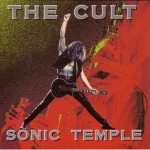
JM: Talking about Bob Rock, you guys were a bit ahead of the curve. You had him produce Sonic Temple, which is probably my favorite of The Cult albums, and he had hardly done any producing up to that point. How did you figure out that he was the right person for the job?
BD: It was really just a gamble and an instinct, to be honest. The whole thing with Bob Rock way back when… I just kind of met him. I think I knew his guitar roadie, actually. He was a drinking buddy of mine, and he said, “You’ve got to meet my boss. He’s in a band, and he’s started producing,” blah, blah, blah, “You’d really like him.” It was kind of organic. I met Bob in Canada the day before The Cult did a gig, and sort of suggested it. Having met him and hung out with him, I thought he was really a focused guy, and just suggested him to the management at the time.
We’d just done an album with Rick Rubin. I don’t know why we ever thought we wouldn’t do another album with Rick. I’m not sure why, because Electric was brilliant. I just think there was an understanding intuitively that that was a one-time deal with Rick, and that we needed to move on a little bit.
It was like instinct, really, with Bob, and we got lucky. I guess we were proven right.
JM: Speaking of Sonic Temple, that’s a super cool photo of you on the album cover. Where was that taken? Was that from a concert?
BD: Yeah, I think the photo was taken at a concert, yeah. The idea was definitely to capture something live. We wanted an iconic image, that was just like a stamp or a brand that would say, “Herein lies rock ‘n’ roll” without having to put it in words. So that was the general idea of why did the sleeve like that.
I honestly can’t remember, it was so long ago. I don’t know where the photo… We might have recreated something that was live that wasn’t quite right. Maybe we didn’t own it and we re-shot it, or something. I have a feeling that’s what happened. I remember looking around at a lot of classic rock ‘n’ roll images, like Pete Townshend onstage back in the day and stuff, and we were thinking that’s the sort of thing we want. That was the idea behind that.
JM: I think it sends the message very well on what to expect from the album.
BD: On that one it does. We haven’t had that same approach on all of our albums. It varies, you know. But in that instance it certainly works.
JM: If you don’t mind going way back in time, I know you’re from Manchester, and I’m always fascinated by what a rich music scene there was there. What was your experience of the punk scene and post-punk scene back in the late ’70’s and early ’80’s?
BD: That was an interesting period to be coming out of high school. It was more luck than anything that I was there. You know, in retrospect it probably looks a lot better than it actually was at the time. We were just looking for a little bit of entertainment.
It certainly changed a lot of people’s lives. Manchester was very quick on the uptake with the punk scene, which obviously originated in London, but very quickly thereafter Manchester got turned on to that. It was just interesting who was around. Obviously these days there’s a lot of nostalgic and euphoric recollection. But it was a good time. I mean, every band that was over in the U.K. played Manchester. I just remember a big gang of us all being really avid music obsessives. We all used to come from different parts of Manchester, and sort of congregate in the center of town going to shows, trying to sneak our way into rock shows and punk rock shows. We just got all obsessed with it, in a good healthy way.
At the time also, without wanting to go deeply political, there wasn’t really a lot of employment options. In 1977, punk happened at a time when there was really no great opportunities to work. So a lot of us were like, we may as well sieze that, kind of get out of where we were at, because the job prospects weren’t that exciting.
So it was cool, man! There’s a lot of stories. If everybody who said they were that Sex Pistols gig was actually at it, they would’ve held it in an arena.
JM: I have to ask, were you there?
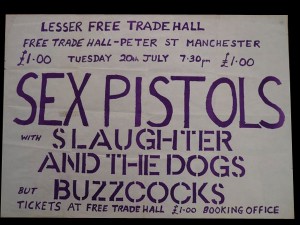
BD: I was at the second one, not the first one. The first one, there were literally 40 people there. The second one, there was a couple of hundred. And I made the second one. I actually still have the ticket and the poster from the gig. For some reason I collected them, so I still have them… I have a house in the Manchester area, so I keep a little memento from that show.
I remember seeing it, and it was definitely life changing. It’s kind of germane, because as much as The Cult is about Sonic Temple and rock ‘n’ roll and touring with Aerosmith and Metallica and all that, very much in my DNA is growing up in the U.K. and punk rock. That’s in there, and that’s in the songwriting, and that’s never really gone away, a bit of that punk attitude. It wasn’t like anybody wanting to put a safety pin through their nose. It was more like taking that music… it kind of got accessible to people. That was why it was a life-changing thing for me. Because I went from a guy who aspired to be maybe a guitar roadie at best, to maybe I could actually be in a band, and people would come and see, and we could do shows. That’s why punk was so great. Sadly, like most movements it became tenth-generation copyists.
I mean, I was lucky to find Ian. I met him in ’81, I think, and we formed the band in ’83. We were lucky to find a songwriting partnership that has endured, and has some sort of, I guess, unique qualities that you have to find to make a band last for 30 years.
JM: How did you and Ian meet?

BD: I was in another band, I was in a band called Theatre of Hate who never came to America. They were a great band. I was in that band, and Ian was the singer in a support band on a tour. He was in a band called The Southern Death Cult. That’s how we met, in a place called Stoke, which is actually where Slash was raised, interestingly or not interestingly enough. It was just a gig, and they were a support band on the tour. We met and became friends, and stayed in contact.
When I was no longer in Theatre of Hate, and he was no longer in Southern Death Cult, we got together and started writing some songs. Before we knew it we’d formed a band, and we’d made a little EP. We were going to tour and we needed a name, and he thought of the name The Southern Death Cult, so we decided back that – and this was thirty years ago – well, we should probably keep part of the name, but we don’t want to call it The Southern Death Cult, because that’s a different band. How about we just call it Death Cult? And that’s what we started with. We did that for about nine months, and the band started getting popular. We felt we’d kind of outgrew the name. There was a real gothic movement going on, and people dressing in kind of cliche… It was like, it doesn’t really fit. We don’t fit our own name. So we ended up just changing it to The Cult. As a matter of fact, it was January the 14th, 1984 when we changed our name to The Cult. The rest is, as they say… leading up to this conversation.
JM: Not too long after The Cult formed, you toured America. What are some of your memories of your first tour of America?
BD: It was funny, we came over on, I think, an airline called People Express, which was almost like getting on a Greyhound bus of the sky. You could buy your ticket almost when you got on the plane. No security. We just did a few shows in what I daresay were the hipper American towns at the time. There was kind of an underground scene. We played obviously New York and L.A., plus San Francisco, Houston, Dallas, and we did a couple in Canada. Which was ironic. We played in Canada and nobody came to see us, and in the end that turned out to be one of the most fervent Cult strongholds. It’s kind of ironic the way it turned around. We first went there and literally like a hundred people showed up.
It was just a really exciting time. We went to L.A. when the Olympics were on, that’s when it was. We arrived the day before the Olympics back in ’84, just to put some sort of historical context. And it was great! We loved it. I’d watched some of our friends in other bands who had already been over, and we were all like, “We gotta get over to the States. We gotta play.” So that was how we did it. We flew around, and did little crazy gigs, and didn’t get any sleep. You know, all the things that guys in bands should do. It was amazing.
Ian had already lived in North America. He had lived for about six or seven years in Hamilton, Ontario. So he knew North America, Canadian North America. But to me it was all fantastic and exciting. I’d been to New York on holiday in 1983, and loved New York, but it was great to see America. It was a place that I wanted to come and visit and enjoy.
JM: At what point did you and Ian realize that you had made it in America?
BD: I don’t know. Maybe when we just saw our song on the Super Bowl [laughs], the commercial on the Super Bowl. [The music to The Cult’s “She Sells Sanctuary” was mashed with “Good Feeling” by Flo Rida for a Budweiser commercial during the 2012 Super Bowl.] I don’t know.
We certainly did the work. One of the things about a lot of British bands is they come to America, they play just a few of the big cities, and they go “Well, OK, that’s it.” And they leave. We really toured and toured, and we supported people, and we kept coming around and playing and doing the work. And we built up a loyal fanbase. That was important.
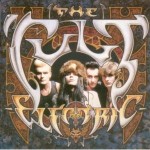
I don’t think we ever felt we’d made it. Maybe when we did Electric, that really helped. We’d done Saturday Night Live, with “She Sells Sanctuary” in 1985, on the Love tour. But that was more of a college thing. So I think Electric really established us. We did a tour with Billy Idol, supporting him on the Whiplash Smile tour, and then we went around and did our own tour, and blah, blah, blah, we asked Guns N’ Roses to open for us. Because Ian had sort of discovered them, and that was their first quote-unquote big tour. And they came out and opened for us, and we toured together and became friends. We’re kind of still friends to this day, with those guys.
I think Electric was the album where mainstream America kind of embraced The Cult, and the album went Platinum. I think that was the point we realized we had some longevity in the States. We weren’t going to be one of those British bands that kind of came and went in the ’80’s.
JM: I imagine that the tour with Guns N’ Roses was pretty crazy. Do you ever think, wow, how did we survive that?
BD: I think young men have a very strong constitution.
JM: [laughs]
BD: I wouldn’t have survived it if I tried the same thing now. I think back in the day… You can operate on very little sleep, that’s for sure.
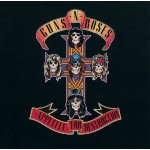
At the time, and I’m not trying to be disrespectful, Guns N’ Roses when they played with us maybe had sold 50,000 records. It was before they got the song on The Dead Pool, you know, “Welcome to the Jungle”. They were a great band, and they were amazing, but they hadn’t really caught on. They were still playing to 7-800 people in L.A. We played with them, and we did an arena, 8-9-10,000 people. And then they got that song “Welcome to the Jungle” in the movie, the Clint Eastwood movie, and it just blew up. Then of course all those great songs that they already had that nobody had heard yet.
I remember one time sitting there with all of them in a dressing room, and I remember Ian saying to those guys, “You know, you’re gonna sell a lot more records than we are.” At the time we the headline band, they were the special guest support band. They were like, “Yeah, whatever.” And I remember Ian saying, “No, you guys, you’re gonna do way better than we are.” I don’t know how much better he thought they were gonna do, but we were pretty convinced. Because they were the real deal. They still are. Any member of that band walks onstage to this day, in whatever version of whatever band they’re in, they’re still all the real deal. They weren’t posing. There’s no poseurs in Guns N’ Roses. There’s nobody faking it. They were just doing what they do, and what came naturally to them. And that’s kind of how the best bands are.
JM: One reads that your relationship with Ian has had ups and downs over the years. How has that affected the music, and how are things now?
BD: I think there’s always going to be sort of creative tension between any songwriters. Ian, I think, he’s vital when we get the blend right, we get that balance right between the two of us, and we make some great music. I think with Choice of Weapon we really made the sort of record The Cult fans hoped we would make. It just ended up that way through two producers and a bit of hardship to get to that point. But, as long as you get there in the end, it’s really exciting to achieve that.
Definitely there’s been some ups and downs, but we’ve had some breaks when necessary. Thirty years playing together, we’ve known each other thirty-two, there was a couple of breaks. Ian went and played with The Doors, and I did some stuff with different people like Jerry Cantrell, I just kind of did some stuff for fun. Took some necessary what-Ian-would-call hibernation or hiatus, to sort of recharge the batteries. A lot of bands do that.
JM: As a guitarist, you write a bunch of killer riffs. How do you know when a riff is worth developing into a song?
BD: That’s a great question. That’s one of my strong suits. I’m kind of a riff guy. I come up with a lot of riffs, and that is the basis of a lot of rock ‘n’ roll, and that kind of puts the platform for Ian to sing on. I guess the average person that isn’t involved in music might think that the singer writes everything. But in actual fact in rock bands, a lot of time the music comes first. He just sort of suggests the musical landscape.
For this album we got together at his house, he’s got a little studio in there, and we just went through my music, kind of very forensically. I mean, we literally catalog all the riffs, and we’ve learned not to throw stuff out. It’s very important not to judge stuff early on. Bob Rock used to say that to me. He said, “Never, never, never discount anything until you’ve given it a fair chance. You might think it’s rubbish, you just never know.” Bob’s always said, “I want to hear everything you’ve got. I want to hear little demos, little crappy demos on the acoustic guitar.” You never know where the magic’s going to come from, and you shouldn’t prejudge it. So that’s what we do. We get together and we go through everything, and we start compiling them, and putting them together and making little mini-demos, before we even take them to the band guys. And that was the process on this record initially, and then there’s just a lot of work after that, to get the organic feel and then get the lyrics and melodies on top, you know?
JM: What advice would you give to an aspiring musician?
BD: Have two great girlfriends, an excellent haircut, and a fantastic pair of sunglasses. That’s the answer I always give.


I love ur music keep it up